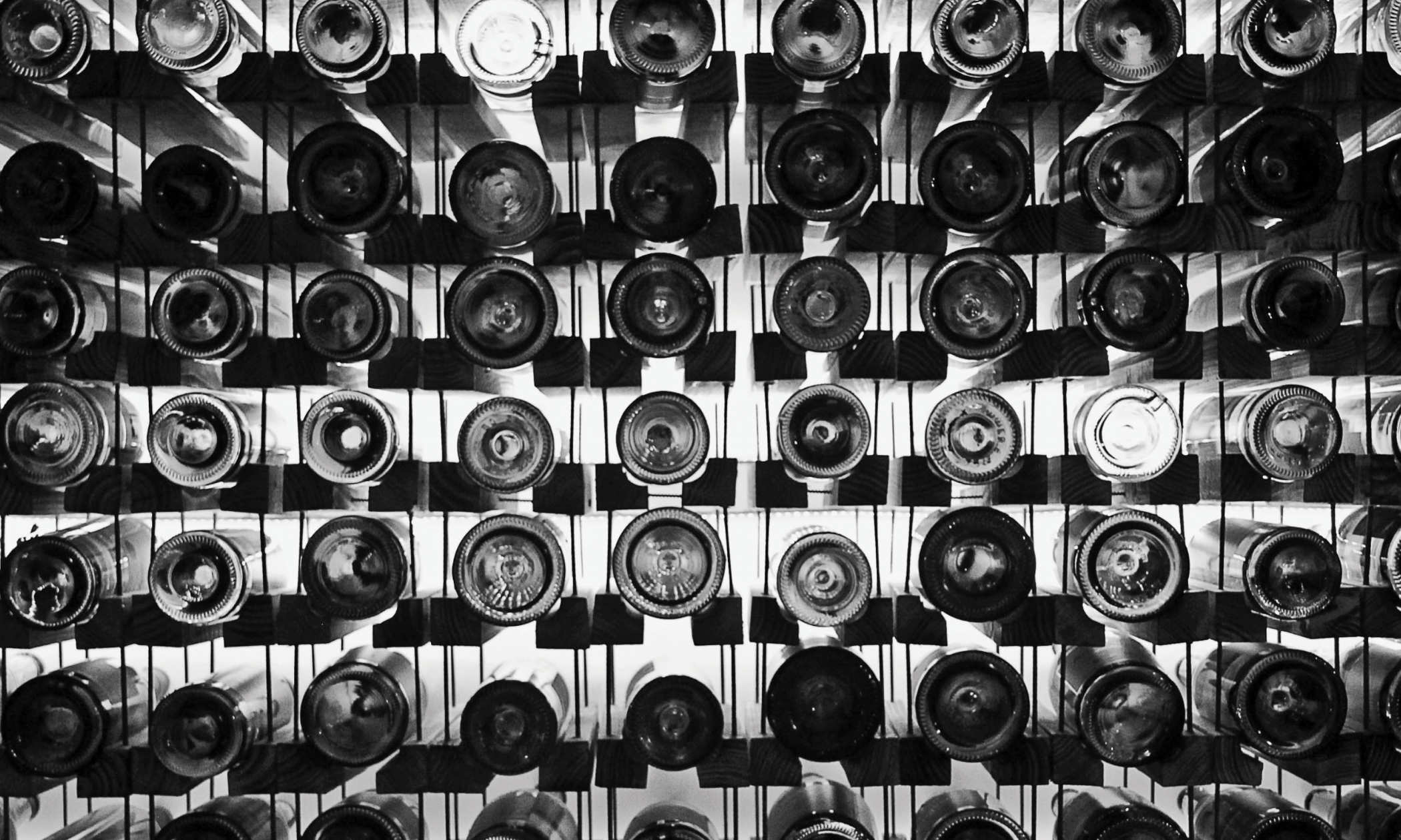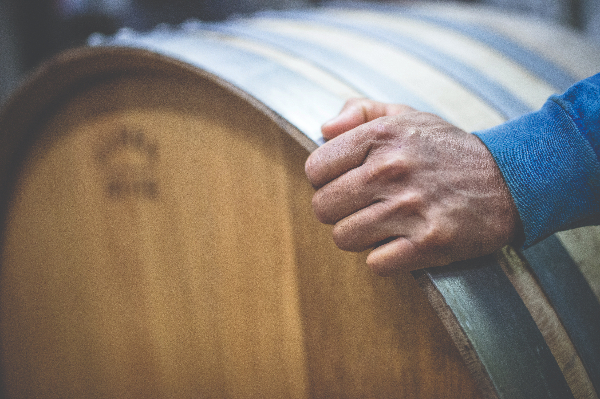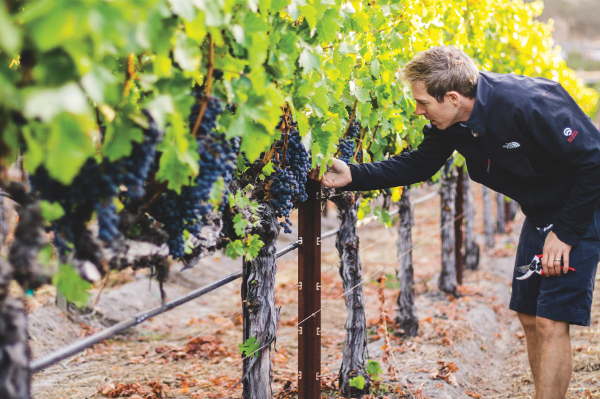Many people are surprised when they learn that glass wine bottles and the transport of bottles are the largest components of the carbon footprint of wine. But given that so many consumers are concerned with environmentally friendly practices in the production of products, it may not be surprising to learn that more Napa Valley wineries are making efforts to reduce the weight of their bottles. This is part of the decades of work toward making Napa Valley a world-class sustainable winegrowing region.
“We recently reduced the weight of our Estate Cabernet Sauvignon bottles by 30 percent,” says Molly Sheppard, educational winemaker and sustainability manager for Spottswoode Estate Vineyard and Winery. “They used to weigh 798 grams [1.7 pounds], and we reduced them to 564 grams [1.2 pounds]. This resulted in a reduced emissions rate of 25 metric tons of carbon.”
Spottswoode took this action as part of its goal to achieve net zero emissions by 2050. It is certified Napa Green and has calculated the carbon footprint of its wine. “The carbon footprint for each winery is different,” says Sheppard. “It depends on the size of your production and business practices. For us, packaging makes up 20 percent of our footprint and transportation is 30 percent, but for other wineries this can add up to more.”
Indeed, world-renowned viticulturist Dr. Richard Smart recently published an article titled “Carbon Footprints: Wine & The Consumer” stating that 68 percent of the wine industry’s carbon footprint is from glass packaging and transport. This is in contrast to grapegrowing, which averages 15 percent, primarily due to fertilizers and gas tractors in the vineyard. Winemaking is estimated to be around 17 percent, due to energy use in the winery and fermentation.
The reason glass bottles have such a high carbon footprint is because of the energy needed to produce glass, as well as the cost of gas/diesel to transport the bottles. The heavier the bottle, the more fuel is needed for transportation from glass manufacturer to winery and from winery to retail establishments. Given this, it is easy to understand why more wineries are trying to “lose weight” by adopting lighter bottles. It is an easy and impactful step to reduce their carbon footprint, decreasing harmful greenhouse gases that negatively impact our global environment.
OTHER BENEFITS TO REDUCING BOTTLE WEIGHT
But losing bottle weight isn’t only good for the environment; it is better for employees and the bottom line. Kristin Belair, winemaker with Honig Vineyard & Winery, explains that they have reduced their Sauvignon Blanc wine bottles by 48 grams each. “Now if we are loading a truck with bottles, we can actually get 7 percent more on the truck and the bottles are less expensive, so we’ve saved money,” she says. “It is also lighter for our employees to lift a case of wine.” This simple change has helped them target all three aspects of sustainability: good for the planet, people and profits.
Sebastian Erggelet, associate winemaker with Grgich Hills Estate, agrees with Belair about the benefits of lighter wine bottles. “We have always focused on our ecological footprint,” says Erggelet. “It is part of our story, history and philosophy as a winery that has been farming organically from the beginning. Our bottles range from 467 grams to 490 grams. We are saving money for ourselves and also for the consumer because every pound adds shipping costs to them.”
CHANGING CONSUMER PERCEPTIONS ABOUT WINE BOTTLES
There is a common perception that many consumers equate heavier wine bottles with higher-quality wine, but the weight of the bottle doesn’t actually impact wine quality. “We don’t believe that the weight of the wine bottle contributes to the perceived quality of the package,” says Erggelet. “I’ve never had a consumer ask for that.”
Belair at Honig concurs: “Our customers seem to focus more on what’s in the bottle,” she explains. “I think it is a marketing thing, which doesn’t make sense as most high-end Bordeaux wines are not in heavyweight bottles.”
But what about alternative packaging for wine? Are cans, boxes, tetra-paks and other containers better for the environment? According to Andrew Floor, chief marketing officer with Priest Ranch, the answer is yes. While its Napa Valley winery still offers premium wines in bottles, it now offers 375 ml cans of Grenache Blanc and Rosé as well.
“We are always influenced and informed by consumer insight,” Floor says. “That ongoing dialogue helped us understand the increasing desire for an earth-friendly format that delivers a quality wine experience with the convenience of an outdoor lifestyle.”
Consumers can be part of this positive movement by letting wineries know they are interested in purchasing wine in lighter wine bottles and/or alternative packaging, as it’s what’s inside the bottle that counts.




